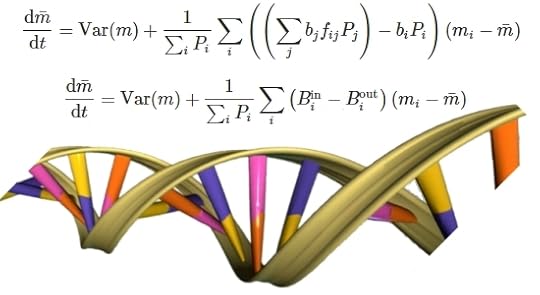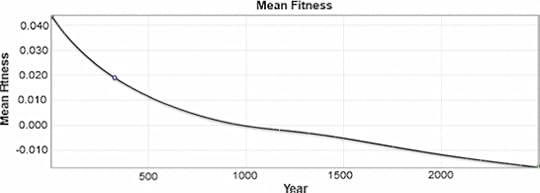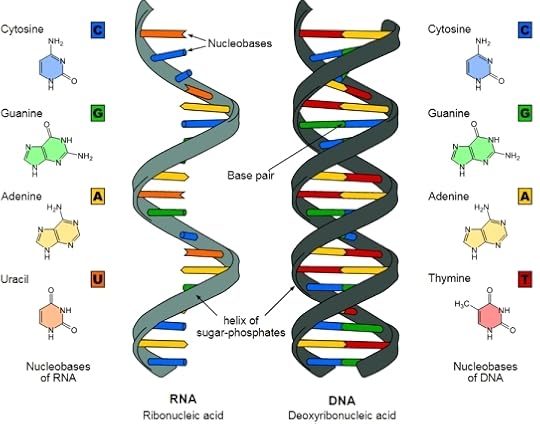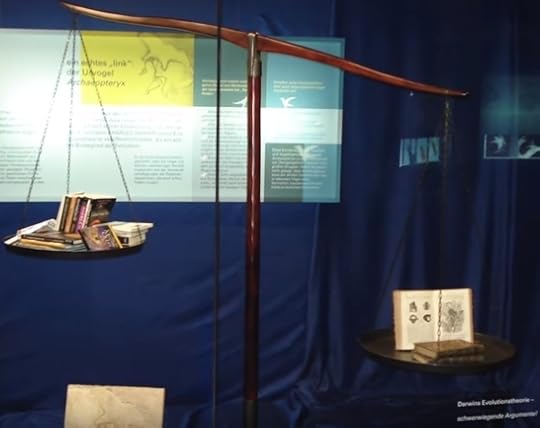Jay L. Wile's Blog, page 27
January 22, 2018
A Mother and Daughter Compare Apologia’s Chemistry to My Chemistry

In the fall of 2014, Apologia released the third edition of its chemistry course. While I had written the two previous editions, they went with two different authors for their third edition. I reviewed it and couldn’t recommend it to anyone. Since Apologia allowed its second edition to go out of print, I thought that homeschoolers needed another option, so I wrote a new chemistry course, which Berean Builders published in the summer of 2015. Many people have asked me how I compare my new book to Apologia’s new book, but it is hard for me to do that, since I am the author of one and not the other.
In December of last year, I received an email from a mother (Leeanne White) who needed advice about chemistry. Her daughter (Sarah) was using Apologia’s new chemistry book and was really struggling. She had gotten through the first three modules and just wasn’t getting it. I suggested that she use my book instead. She decided that was a good idea. I also asked her to consider writing a completely honest comparison of the two courses. She agreed.
Well, Sarah and Leeanne have been through four chapters of my book now, and they both agree that it works much better for them. They wrote up a review (which contains both perspectives), and it appears below. They promised to write another review once they are completely done, but I thought people might want to see what they think so far.
From the student’s perspective:
We chose Apologia’s Exploring Creation with Chemistry 3rd edition, because I had just completed Apologia’s Anatomy textbook, 2nd edition, and I loved it. After finishing 3 modules of Exploring Chemistry I was very displeased and frustrated to the point where I thought I should find a different textbook. After doing some searching, we chose Dr. Wile’s Discovering Design with Chemistry. I have now studied 4 chapters of Discovering Design with Chemistry, and I love it! I have been comparing the two textbooks and taking notes as I study. Here are some of the differences I noticed.
From the very first sentence of Discovering Design’s introduction, I found it to be warm, welcoming, fun, clear and understandable. On reading the introduction and the first module to the Apologia book, I thought it would be a good course, however, as I continued into the 2nd and 3rd modules, I found myself becoming more overwhelmed and confused.
Subject Matter: From what I can tell the Apologia Chemistry covers all the topics necessary for chemistry, but I was not always sure why the book included some of the information. I noticed as I went through Discovering Design that Dr. Wile does not waste time talking about topics or formulating experiments that are not directly related to the material being studied. When I covered the material a second time in Discovering Design, I finally grasped concepts that were confusing: why math is so important to chemistry; what light, energy and frequency must do with atoms and how they relate to chemistry and to one another; how historical scientists fit into the chemistry concept.
Organization of Subject Matter: In studying the Apologia Chemistry, I got the impression that it was thrown together, whereas the Discovering Design flows from one thought to the next. An example would be in Discovering Design the discussion of density was given in chapter 1 along with other discussion about measuring units. This made sense to me. In Exploring Creation, the discussion of density doesn’t even come in until module 6. So far, this seems to be a repeating thing with Exploring Creation with Chemistry 3rd edition and is probably a main reason why the book is so confusing for me.
Illustrations: Both texts have some good illustrations. In the Apologia text, I particularly liked figure 1.3 and Table 1.1 and 1.2 (1.2 is also in Discovering Design). However, figure 2.7 was confusing in Apologia where I loved the comparable graphed outline of the four categories of element, compound, homogeneous and heterogeneous mixtures in Discovering Design.
Review and Study Guides: Discovering Design shows you what you need to remember (pink boxes, bold face type). There are good comprehension checks to help make sure you understand the material. Dr. Wile’s reviews really prepare you for the test. What I also love about Dr. Wile’s reviews is that he asks questions that you really can’t answer unless you know the material. Also, in chapter 2, I appreciated having the edited version of Dalton’s Atomic Theory. Though the Apologia Chemistry study guides were helpful for preparing for the tests, I did not feel as if it mattered or not whether I understood the material.
From the parent’s perspective:
Solutions and Test Manuals: The format of the Solutions and Tests in both texts is organized and easy to use. In the Apologia, the review questions are helpful, but a few times I found myself confused trying to help the student struggle through a concept, and the textbook was little help. The tests, for the most part, are either multiple choice or short answer, and there are few, if any, scientific terms for the students to learn. A few times, I was not always sure the answers given were correct.
In Discovering Design, the answers for the review and test questions are thorough so both the teacher and the student know exactly why an answer is correct or not. On the tests, the questions are in a variety of formats and quite often have challenging questions that require the student to apply concepts. The tests require students to learn scientific terms.
January 15, 2018
Birds Seem to Intentionally Spread Fires!
Brown Falcons like this one have been observed intentionally spreading fires in Australia.
(click for credit)
It has been known for some time that certain birds of prey tend to congregate near wildfires. Most animals flee from fire, and that’s why the birds are there. After all, the fire is essentially flushing small animals out of the underbrush, making them easy prey for the birds. Now it’s not all that surprising for birds to notice the abundance of easy prey near a fire and eventually figure out that there is an association between fire and prey. However, the authors of this study confirmed something that Aboriginal Australians had known for quite some time – birds actually spread the fires to get even more prey!
This “fire spreading” has been depicted in sacred rituals of the Aboriginal Australians, but many non-Aboriginals have expressed skepticism. As a result, the authors of the study decided to conduct detailed interviews with both Aboriginal and non-Aboriginal Australians to see if they could both confirm the behavior and figure out a pattern to it. Two of them (Ferguson and Eussen) also reviewed their own observations over years of field work in Australia. Based on the interviews and those observations, a pattern emerged.
These three species of bird will grab a smoldering object from one fire and then fly to an area where there isn’t any fire. They will then drop the object, attempting to start another fire there. Not only will they take smoldering objects from forest fires, they have been observed stealing from campfires as well! This is not only done on an individual basis, but sometimes the birds work together so that more fire can be spread.
The authors indicate that this behavior can be an important consideration for managing both controlled burns as well as wildfires. After all, if you build a firebreak in order to stop a fire, a bird might end up helping the fire jump that firebreak. They plan to do another study with rangers who will set up controlled burns so that they can observe (and hopefully better document) this behavior.
Of course, this study applies only to Australian birds of prey (and so far, only three specific species). However, you have to wonder how widespread this behavior is. Could it be that birds are helping to spread Californian wildfires? How would firefighters take this into account? Perhaps the authors of this study (and other scientists) will get to know the birds’ behavior well enough for such questions to be answered.
For me, there are two other important takeaways from this study. First, it further illustrates just how intelligent birds are. Second, it tells us that we shouldn’t automatically dismiss the tales told in sacred rituals. Had people not dismissed the fire-spreading behavior of birds depicted in Aboriginal rituals, we would probably already know a lot more about this amazing phenomenon!
January 11, 2018
The Surprising Reason that Some Cave Fish are Blind

The Mexican blind cave fish (click for credit)
The Mexican tetra (Astyanax mexicanus) can be found living in fresh water above or below ground. The ones living in water above ground are “normal,” but the ones living in water below ground (where light is scarce or nonexistent) are blind. As you can see from the picture above, they don’t even have noticeable eyes. Why? The standard view has always been that seeing things takes a lot of energy, so if you can’t see anything because it is always dark, it doesn’t do any good to waste energy on a visual system. However, if you can see things, it is worth the energy, because a visual system allows you to more easily find food, avoid predators, find a mate, etc.
So, if you are a Mexican tetra living in the waters on the surface of the earth and disabling mutations occur in the genes of your visual system, your fellow Mexican tetras will out-compete you, and you will probably die without passing on those mutations to the next generation. However, if you are a Mexican tetra living in the dark and get the same disabling mutation, it will not affect your ability to survive and pass that mutation on to the next generation. As a result, mutations in the visual systems of underground Mexican tetras accumulated over time, leading to blind cave fish.
A couple of years ago, a study confirmed the first part of this story. By comparing the blind version of the species to the version that can see, they showed that the energy “cost” of having a visual system was 5%-15% of the fish’s total metabolism, depending on the size of the fish. As a result, it makes sense that fish who do not use their visual system (like cave fish) would be better off not having one. However, the second part of the story (mutations building up to disable the system) seems to have been falsified, at least for this particular species.
The authors of the study looked at the genes that are known to be responsible for producing eyes in normal Mexican tetras and found that they are not significantly different from those in blind Mexican tetras. In other words, the genes for eyes in blind Mexican tetras have not been disabled by mutations. Instead, the authors found that those unbroken genes have been “turned off” through a process called methylation.
What is methylation? One of the simplest chemical components in organic chemistry is called the “methyl group.” It is a carbon atom attached to three hydrogen atoms. Methylation is a process that adds this group to a molecule, changing its chemistry. With the proper chemical machinery, a methyl group can be added to any molecule, including DNA. When a methyl group is added to DNA, it doesn’t change the genes in any way, but it affects how much they are used. If done correctly, adding a methyl group to the right places on DNA can keep the genes from being used at all. In other words, DNA methylation can “turn off” genes without changing them.
That’s what seems to have happened in these cave fish. It is called an epigenetic change, because the genes themselves don’t change. Instead, something “on top” of the genes (a methyl group) causes the change. Geneticists have known about epigenetic changes for a long time. It is probably one way an organism adjusts to changes in its life and environment. However, it was originally thought that epigenetic changes aren’t passed on from generation to generation. As time has gone on, however, there have been a lot of studies that indicate such changes can be passed on to subsequent generations. Indeed, this seems to be one of those studies. Rather than mutations disabling the genes of blind Mexican tetra, epigenetics has simply turned them off, and that “off” switch has been passed down through the generations.
If this study is confirmed (I haven’t seen a peer-reviewed version yet), it will probably be hotly contested for a while. Why? Because we know that epigenetics is influenced by an organism’s surroundings. Thus, this study seems to say that the blind cave fish’s surroundings caused its evolution from having eyes to not having eyes. This is anathema to the standard NeoDarwinian view of evolution, which sees all evolutionary change as random, because it is caused by random mutations in the DNA. It isn’t “directed” by anything, including the organism’s surroundings. Of course, once this random change happens, it is subjected to natural selection, and the surroundings play a role in that process. However, the actual change itself is supposed to be completely random.
This study seems to indicate that the surroundings play a role in the change itself, before natural selection has a chance to act. Creationists have argued that many adaptations we see in nature are caused this way. The Creator designed into His creation the ability to adapt, and He designed mechanisms that would allow that adaptation to be directed by the organism’s surroundings. Epigenetics may be one of those mechanisms.
Please note that this is not the first adaptation that has been shown to be directed by an organism’s surroundings. Lenski’s famous Long Term Evolution Experiment has demonstrated that gene changes can also be directed by the environment, at least in the case of bacteria adapting to eat a food that they don’t normally eat in presence of oxygen. Thus, the creationist idea of the surroundings influencing adaptive change seems to be getting more and more confirmation as time goes on.
January 8, 2018
Another Evolutionary Idea Falisified

In 1930, Dr. Ronald Fisher (statistician and geneticist) wrote a book entitled, The Genetical Theory of Natural Selection. In that book, he produced a mathematical proof of what he called the “Fundamental Theorem of Natural Selection.” Partly due to his difficult writing style and partly due to a feud in the literature with American geneticist Dr. Sewall Wright, his theorem was misunderstood for quite some time. In 1972, however, physical chemist Dr. George R. Price explained it in a detailed way and showed that it was mathematically correct.
What is the importance of the Theorem and what does it say? This quote from Essential Readings in Evolutionary Biology (by Francisco J. Ayala, John C. Avise, 2014) answers both of those questions:
…Fisher’s formulation of the “fundamental theorem of natural selection,” which would play a preeminent role in the future development of evolutionary genetics: “The rate of increase in fitness of any organism at any time is equal to its genetic variation in fitness at that time.” (p. 73)
In other words, natural selection will cause an organism to increase in fitness as long as its population has variation in the genes associated with fitness. The more variation in those genes, the faster the organism will increase in fitness. As Drs. Ayala and Avise indicate, this theorem became very important in shaping the field of evolutionary genetics.
While Fisher’s fundamental theorem is still quite correct, it is limited. In particular, it doesn’t take the effect of mutations into account. However, there is a corollary attached to the theorem: Since mutations should increase the genetic variation in a population, mutations should lead to a faster rate of fitness increase. While that corollary was important in shaping Neo-Darwinism, a recent paper published in the Journal of Mathematical Biology has shown that it is false when even mildly realistic conditions are considered.
The paper was written by Dr. William F. Basener, Emeritus Associate Professor of Mathematics and Statistics at the Rochester Institute of Technology, and world-renowned geneticist, Dr. John Sanford. I know that Dr. Sanford is a young-earth creationist. I don’t know about Dr. Basener. He is definitely associated with the intelligent design movement, however.
In their paper, Basener and Sanford develop a mathematical model based on Fisher’s original work. They show that when mutations are not considered, their model is equivalent to Fisher’s theorem. Then they add mutations to the model. They show that if there are just as many beneficial mutations as harmful ones, the results are consistent with the corollary that is attached to Fisher’s theorem. However, as everyone knows, that is an unrealistic view of mutations. There are far more harmful mutations than beneficial ones.
They then survey the literature, looking for the proper ratio of harmful mutations to beneficial ones. According to their search, the best number they could find (from an evolutionary standpoint) is that there are a million harmful mutations for each beneficial one. They decide to be generous, saying in their model that there is a beneficial mutation for every 1,000 harmful ones. Using this (incredibly generous) value, here is what they show:

So when a moderately realistic view of mutations (that is still incredibly generous to the evolutionary hypothesis) is used, we see that an organism’s fitness doesn’t not increase over time. In fact, it decreases rather rapidly. Thus, the corollary to Fisher’s theorem is falsified under even moderately-realistic conditions.
Now please understand that Fisher’s theorem is not used very much these days. I had never heard of it, and I asked two biology professors I know (both are evolutionists) if they had heard of it. Neither of them had. Thus, I don’t think the fact that Fisher’s corollary has been falsified is a big deal to modern evolutionary science. However, I do think it mathematically verifies what creationists and intelligent design advocates have said for a long time: the kinds of mutations that actually happen in nature don’t generally lead to an increase in fitness, especially when populations are considered.
January 2, 2018
Here’s Another College That Gets It

Six years ago, I wrote an article about Anderson University, where I am an adjunct professor. While the university clings strongly to the essentials of the Christian faith, it does not force its faculty to conform to one interpretation of Scripture. As a result, students are exposed to many different views that exist within Christendom.
In addition, rather than just trying to proselytize for their own view, the faculty are committed to making sure students understand the different ways Christians interpret the world through the lens of Scripture. This is best exemplified by an example. One of the science professors is an old-earth creationist, but he regularly invites me into his classes either to give a young-earth view of the science the students are learning or to engage in a friendly debate with him on the issue of the earth’s age. I especially like the latter, since students see that two people can engage in serious disagreements and still be good friends.
Just before Christmas, someone I respect and admire sent me an article that I wanted to share with my readers. It gives you another example of a Christian College (in this case, a seminary and Bible College) that gets it. To fully appreciate the article, however, you need to know the history behind it.
Answers in Genesis founder Ken Ham engaged in a dialogue with Dr. Richard G. Howe, Professor Emeritus of Philosophy and Apologetics at Southern Evangelical Seminary. Like me, both Ken Ham and Dr. Howe are young-earth creationists, but they strongly disagree about the importance of young-earth creationism. Like me, Dr. Howe says it is a valid interpretation of Scripture, but it is not the only interpretation that someone who takes the Bible at its word can have. Ken Ham says that those who take the Bible at its word must be young-earth creationists. Ken Ham wrote about the experience, and Southern Evangelical Seminary replied. This prompted a reply from Ken Ham, which then led to the article that my friend sent me.
If you have the time, you can listen to the original dialogue and then read the back-and-forth articles. I think both sides do a good job of stating their cases. I personally think that Southern Evangelical Seminary is correct, so not surprisingly, I find their arguments to be stronger. Nevertheless, I have a lot of respect for Ken Ham and his ministry, as I have made clear in other articles (see here, here, here, and here.) Of course, I have also had run-ins with him about those things on which we disagree (see here, here and here).
The reason I wanted to share the last article in this exchange is because it quotes some of Southern Evangelical Seminary’s young-earth-creationist professors at the end. If nothing else, I strongly recommend that you scroll down to “Faculty Statements (not a full list)” to read some very thoughtful views on young-earth creationism. In my opinion, the second one is the best, and it comes from Dr. Floyd Elmore, who is a young-earth creationist. He discusses the fact that the age of the earth depends on interpretation. It is not plainly spelled out in Scripture. He ends with this advice:
We should all take a breath and have a reality check about our assumptions as we approach these passages in Romans 8 and 1 Corinthians 15. We should not read into them what in fact is not stated plainly.
I would say that Dr. Elmore’s excellent advice should be used when approaching any passage of Scripture.
December 21, 2017
A Christmas Letter from 1914

English and German soldiers celebrating Christmas on the Western Front in 1914.
It’s Christmas time again, and I am in the midst of preparing for many things, including the Christmas Eve service at church. I have been asked to do a short skit about Christmas. You can find some of my past attempts at dramatizing Christmas here, here, here, and here. The one I am doing for this year’s Christmas Eve service is much shorter, and it focuses on a remarkable event that happened during World War I: The Unofficial Christmas Truce of 1914. I think it illustrates the “peace, good will toward men” aspect of Christmas in a very tangible way. Parts of the drama (like the first four sentences) come straight from letters written by soldiers who participated in the event.
Ideally, the person doing the skit should be dressed in something like World War 1 gear. Honestly, a helmet and a long, ratty green coat over khaki pants would probably be good enough. An old-style rifle propped up next to him would be ideal. He should be sitting on a small stool or something like that (I will be sitting on one of the stairs that are on stage) and writing a letter.
As is the case with all of my dramatic material, please feel free to use this in any way you think might edify the Body of Christ. I would appreciate a credit, but there is no copyright on this piece.
Merry Christmas.
On earth, peace, good will toward men
I think I have seen one of the most extraordinary sights today that anyone has ever seen. About 10 o’clock this morning, I was peeping over the parapet when I saw a German, waving his arms, and presently two of them got out of their trenches and came towards ours. We were just going to fire on them when we saw they had no rifles. So one of our men went out to meet them and in about two minutes the ground between the two lines of trenches was swarming with men and officers of both sides, shaking hands and wishing each other a happy Christmas.
The Germans offered us some cigars, so I went back to my trench and found some extra jam and corned beef. I guess some of the other men had done the same thing, because pretty soon, the Germans were eating eagerly. I figured that they must have been short of food, because while I didn’t understand hardly anything they said, I could tell that this was probably their first good meal in days. Funny, just a few hours earlier, I was complaining about the food. Seeing the Germans tear into it made me realize that I should have been grateful for what I had.
After a while, someone threw a football from a trench, and we all started kicking it around. I couldn’t believe that I was playing footie with the same men I had been shooting at the day before. After a while, our men started singing “Silent Night.” I guess the Germans knew the same song, because they started singing it in German. As time went on, we found more Christmas songs that both sides knew, and we sang them, too. I will never forget the feeling of hearing men sing the Christmas carols I know and love in a completely foreign language. God truly speaks to all men, doesn’t He?
After a while, some felt the need for sleep, so men started walking back to their trenches. The Germans went to their side, and our men went to our side. I knew that this short respite from the war couldn’t possibly last forever, but I wanted it to. I really wanted it to. I stayed until the very last German started making his way back to his trench. As I started to go back to mine, he turned to me and said, “Frohe Weihnachten.” Earlier, I had learned that this was the German phrase for “Happy Christmas,” so I said it back to him in English.
Back in the trench, I asked the chaplain to read the Christmas story from the Bible. He started reading from the second chapter of Luke, and when he read the words of the angels, “Glory to God in the highest, and on earth peace, good will toward men,” it meant more to me than it had ever meant before. Yes, even during the horror of war, the Christ child can still bring peace on earth, good will toward men.
May your Christmas be as happy as mine was this day.
December 14, 2017
Bias in Science

An illustration of the differences between RNA and DNA
(click for credit and a larger image)
Several years ago, Dr. Ivan Oransky (MD) and Adam Marcus (MA in science writing) started a blog called Retraction Watch, which reports on scientific papers that have been retracted by the journals that published them or the authors who wrote them. It provides a valuable service to those of us who frequently read the scientific literature, because many journals and authors don’t promote their retractions nearly as much as they promote their papers. Thus, if I want to see whether or not an important publication in the scientific literature has withstood the scrutiny of other scientists, I can check this blog.
Last week, while scanning the new entries, I ran across an interesting one. It reported on a major paper published last year in the journal Nature Chemistry. Despite the fact that it was published only 18 months ago, it has already been cited by 26 other papers in the scientific literature. Why? Because it appeared to solve a very serious problem in what is probably the most popular origin-of-life scenario.
Because the origin-of-life scenario I was taught as fact at university has fallen out of favor among origin-of-life researchers, other scenarios are being explored. One such scenario is the “RNA world” hypothesis. In this view, life was not initially based on DNA. Instead, it was based on a similar molecule, RNA (the differences between the two molecules are shown in the graphic above). This view has garnered a lot of attention, because RNA can do something DNA cannot. It can speed up chemical reactions without being used up in the process.
Why is this important? Many chemical reactions that occur in living systems happen slowly on their own. To be used by a cell, they need to be sped up. Cells do that today with enzymes, and they make those enzymes based on instructions that are found in their DNA. The problem is, of course, that a living system is needed to replicate DNA. But that living system depends on the information stored in DNA. How was DNA originally produced if its very replication is based on the information it contains? The RNA world gets rid of that problem.
Because RNA is very similar to DNA, it can store the genetic information a cell needs to be alive. However, some forms of RNA can also speed up chemical reactions without being used up. In the “RNA world,” then, the first cells carried their information in RNA, and they also used RNA to speed up their chemical reactions. Enzymes and DNA then came later, as these simple living systems began to evolve.
One of the many problems with this origin-of-life scenario is that in all studies so far, RNA needs enzymes in order to replicate properly. Other RNA molecules could, in theory, do the jobs that enzymes are doing now, but no mechanism by which this happens has been found. That’s where the retracted paper comes in. It reports on a series of experiments that seemed to demonstrate a possible way in which RNA could be replicated over and over again without the help of enzymes. However, when another member of the research team (Tivoli Olsen) couldn’t reproduce the results reported in the paper, the team stepped forward to retract it.
What’s interesting is an admission made by the research team’s leader, Nobel Laureate Dr. Jack W. Szostak. He said:
In retrospect, we were totally blinded by our belief [in our findings]…we were not as careful or rigorous as we should have been (and as Tivoli was) in interpreting these experiments.
This happens a lot in science. Scientists aren’t unbiased investigators who don’t have any stake in the outcome of their experiments. Generally, when we do experiments, we are looking for some result. If we aren’t careful, that can make us see things which aren’t really there. In this case, that’s what happened to the authors of the paper.
Now don’t get me wrong. I am not writing about this to insult Dr. Szostak and his team. In fact, I applaud them! Not only did they step up and do the right thing (regardless of the consequences), but Dr. Szostak even freely admitted the reason for the error. I am also not saying that because of this retraction, the “RNA world” hypothesis is wrong. I think it is, but not because of this retraction. Those who really believe that living systems can form as a result of random chemical reactions should continue to investigate the “RNA world” hypothesis, even though I don’t think they will find enough evidence to indicate that it’s a viable mechanism.
I am writing this so that people understand there is no such thing as an unbiased scientist. We all approach science with our inherent biases, and those biases affect our results. The problem isn’t the bias. The problem is that so many scientists (as well as science journalists and science educators) pretend that it doesn’t exist!
December 7, 2017
Lightning: A Natural Nuclear Reactor!

A thunderstorm in Annemasse, Haute-Savoie, France (click for full credit info)
In 1994, a scientific team using the Compton Gamma Ray Observatory reported seeing intense gamma ray flashes coming from the earth. The researchers called it an “unexplained terrestrial phenomenon,” but they noted:
The apparent correlation of the events with storm systems leads us to hypothesize that they are caused by electrical discharges to the stratosphere or ionosphere.
This generated interest among certain research groups, so ground-based observatories, airborne detectors, and other space-based observatories began looking for the same thing. It is now well-known that lightning is accompanied by the production of high-energy gamma rays.
While these gamma rays are of high enough energy to induce nuclear reactions, until now there has been no conclusive evidence that such reactions are actually occurring in connection with lightning storms. However, thanks in part to a Japanese academic crowdfunding site, we now have strong evidence that lightning does, indeed, produce nuclear reactions in the atmosphere!
The research team that gave us the evidence had begun a project where they were building and placing small gamma-ray detectors along Japan’s western coast, which is apparently ideal for observing strong thunderstorms. However, they ran out of funding, so they used the aforementioned academic crowdfunding site to raise money to continue their work. The extra funding made the difference, and just last month, the team published a paper in the journal Nature where they report their results.
They saw three bursts of gamma rays associated with lightning. The first lasted less than a thousandth of a second, and it was consistent with what other studies had already seen: high energy gamma rays coming from the lightning strike itself. However, they observed a second burst that lasted for several hundredths of a second. That gamma ray burst was characteristic of neutrons being absorbed by nitrogen atoms. The final burst lasted for tens of seconds (about a minute) and was characteristic of positrons (anti-matter versions electrons) colliding with electrons. When matter and antimatter collide like that, they annihilate one another and produce gamma rays of a specific energy.
Based on these data, the most likely explanation is that the initial gamma rays produced by the lightning strike knocked neutrons out of nitrogen atoms in the atmosphere. Those neutrons were then absorbed by other nitrogen atoms, which became neutron-rich and produced the second burst of gamma rays. The nitrogen atoms that had initially lost neutrons decayed by emitting a positron. That positron then collided with an electron, producing the third burst of gamma rays.
There are many interesting aspects to this study, but I want to focus on just one of them. If the scenario explained above is correct, then carbon-14 is also being produced by lightning. Based on what we already know about such reactions, only about 4% of the neutrons that were initially knocked out of the nitrogen atoms would be reabsorbed by other nitrogen atoms. The other 96% would knock a proton out of other nitrogen atoms, producing carbon-14. Thus, we can now state with some confidence that lightning strikes produce carbon-14!
Why is this interesting? Well, I have been told since I was a university student that radioactive dating systems are generally not affected by what happens on earth, since there just isn’t enough energy in terrestrial events to affect nuclear systems. Thus, the radioactive dating systems that we use to establish the age of fossils and rocks cannot be significantly affected by terrestrial events. We can now say with some confidence that this just isn’t true. Lightning strikes clearly produce enough energy to affect nuclear systems, and based on the data given in this study, it is affecting one that is used for radioactive dating (the carbon-14 system).
In addition, this isn’t the only such revelation that has recently come to light. Earlier this year an innovative scientist realized that a very simple physical process called diffusion can strongly influence certain radioactive dating systems. His model suggests that it could throw off ages given by the popular rubidium-strontium dating method by as much as 29 billion years! So just this year, we have learned about two processes that happen routinely on earth which affect different radioactive dating methods. I predict that over time, more will be discovered.
November 30, 2017
More Evidence That Bill Nye Has No Idea What He Is Talking About
Bill Nye, the Anti-Science Guy (click for credit)
Bill Nye calls himself “The Science Guy,” but most of his actions are decidedly anti-science. In 2012, he made a video saying that we should censor a scientific idea because it goes against the scientific consensus. He also narrated a faked experiment, demonstrating his ignorance of the physics related to global warming. He published a book about evolution that was riddled with scientific errors. He tried to discuss human reproduction and once again, ended up showing his ignorance. He also contends that the discipline which gave us science is essentially useless. The fact that he is one of today’s spokepersons for science is a frightening indication of this generation’s scientific illiteracy.As I was preparing to blog about a completely different subject today, I realized that over the past few days, I have come across two more examples that indicate Bill Nye really has no idea what he is talking about, so I decided to put off the topic I was going to discuss and write about those examples instead. One of them relates to the first anti-science action I mentioned above. Nye made a video telling parents to stop thinking for themselves and encouraging their children to think for themselves. Instead, he told them to simply parrot what the High Priests of Science say when it comes to the origin of life and its diversity. Obviously, that is about as anti-science as one can get. Along the way, he made an incredibly ignorant statement about the debate regarding origins:
Denial of evolution is unique to the United States.
As I pointed out previously, that is utter nonsense. There are creationist movements in many, many countries, including Australia, Belgium, Brazil, Canada, France, Germany, Hungary, Italy, Japan, Latvia, Mexico, and the Netherlands. Just a few days ago, however, I blogged about a specific example that comes from Germany. In 2015 Dr. Günter Bechly, a German paleontologist who was the curator of the Stuttgart Museum of Natural History, publicly announced that he thinks Intelligent Design is the best explanation for the origin and diversity of life. The Inquisition was mobilized, and he is no longer the curator of the Stuttgart Museum of Natural History. He is now a Senior Fellow at an Intelligent Design Think Tank, and he spoke at an Intelligent Design conference that was held at Cambridge University.
If denial of evolution were unique to the United States (as the anti-science guy says) Dr. Bechly would not have been “converted” from materialist NeoDarwinism to Intelligent Design, and there would not have been an Intelligent Design conference at one of England’s most famous universities.
The other example is a bit self-serving, but since this is my blog, I will discuss it anyway. As many of my readers know, I write science textbooks that teach science from a young-earth creationist perspective. As all science textbooks should, my books discuss many sides when it comes to the issue of origins, but they end up favoring the young-earth creationist side. Well, in Nye’s error-riddled book about evolution, he says this about students who are taught creationism:
Not only that, these kids will never feel the joy of discovery that science brings.
I have already given several examples of how wrong that statement is, but recently, I was given one more.
A student who used my textbooks when she was in high school recently sent me a Facebook message indicating that she had discovered a new bacteriophage, which is a virus that infects bacteria. She is part of a large project called the Science Education Alliance, and at the college where she is currently studying, that program is being used to allow students to collect and analyze soil samples, hunting for new bacteriophages. She ended up discovering a new one that infects bacteria from the genus Microbacterium.
Now remember what the anti-science guy says. Students who are taught creationism will never feel the joy of discovery that science brings. Well, this student was taught creationism, and she has already made a completely new scientific discovery. I suspect that’s one more discovery than the anti-science guy has made! Far from creationism squelching such an opportunity (and here’s the self-serving part), it actually made the opportunity possible. In her report on her discovery, she explains why she named the virus “WileyJ”:
My favorite scientist growing up was Dr. Wile. He wrote all my science books and gave me a love for science so I wanted to honor him with that.
Now obviously part of my motivation for sharing this story is to “toot my own horn,” an instrument one pastor says I play very well. However, the other is to drive home how wrong the anti-science guy is. According to the student who made this discovery, the creationist textbooks with which she was educated gave her a love for science. That love is the reason she is doing the research which led to her discovery.
When will Bill Nye learn what real science is all about? Probably never, but I do hope that the more his ignorance about science comes to light, the less people will listen to his error-filled pontifications.
November 27, 2017
Another Atheist Comes to Christ Because of Science

A 2009 display used by paleontologist Dr. Günter Bechly. It was meant to show that the weight of the scientific evidence supports NeoDarwinian Evolution. For Dr. Bechly, it ended up having the opposite effect! (Image taken from the video linked below.)
In 2009, one of the largest German events celebrating the 150th anniversary of Darwin’s book, On the Origin of Species, was headed up by Dr. Günter Bechly, a world-renowned paleontologist with an incredibly impressive list of original research published in the peer-reviewed literature. At the time, he was the curator of the Stuttgart Museum of Natural History, and he wanted to show, in no uncertain terms, that there is absolutely no scientific dispute about origins. As a result, one of the displays in his museum’s celebratory exhibit (shown above) was a scale with creationist and intelligent design resources on one side and Darwin’s book on the other. Darwin’s single book tipped the scale, indicating that the weight of the scientific evidence was in evolution’s favor.
There was only one small problem. Dr. Bechly had not actually investigated any of the resources that were on the “light” side of the scale. Oh sure, he had read other evolutionists’ views on those resources, but he had not actually investigated them himself. He decided to do so, and he was surprised by what he found. As he explains in the documentary Revolutionary: Michael Behe and the Mystery of Molecular Machines:
…and what I recognized to my surprise is that the arguments I found in those books were totally different from what I heard either from colleagues or when you watch Youtube videos where the discussion is around intelligent design versus NeoDarwinian evolution. And I had the impression on one side that those people are mistreated – their position is misrepresented and on the other hand that these arguments are not really receiving an appropriate response. And they have merit.
He ended up being scientifically convinced that Intelligent Design is the better explanation for the amazing world he had been studying his entire career, and he made that decision public in 2015. Then he faced a firestorm.
His requests for new fossil material were blocked. He received an announcement that one of the most important positions in his research staff would not be refilled when the current employee retired. The large amber collection he was responsible for was moved from his office. He was told that he must resign from the German Research Foundation, which directs the allocation of certain research funds. He was told that he was a threat to the credibility of the museum and that he should quit. The museum then deleted his pages from their website, despite the fact that they said nothing about Intelligent Design. It then dismissed him as the head of a major exhibition that he had designed, despite that fact that he was the resident expert on the subject. Eventually, it became clear that he would no longer be allowed to do the research he wanted to do, so he resigned from the museum. He is now a Senior Fellow at The Center for Science & Culture, an Intelligent Design Think Tank.
In other words, the High Priests of Science marshaled The Inquisition against him. When a scientist of his caliber is convinced by the arguments of the Intelligent Design community, he must be silenced. After all, the official pronouncements from the Holy See of Science is that there is no debate on the validity of NeoDarwinian Evolution. An accomplished scientist who used to parrot that pronouncement and now says it isn’t true must be excommunicated. Otherwise, his heresy might spread!
Of course, the High Priests of Science are still left with a major problem. How can they rationalize the fact that someone who clearly understands evolution and was fully indoctrinated in their dogma could be convinced by “anti science” shysters like Intelligent Design “scientists.” Perhaps they played on his religious leanings? As Dr. Bechly explains, that’s not possible:
I’m coming from a family background which is totally secular, agnostic. [I] was not baptized, didn’t join any kind of religious education, never went to church, so I was completely irreligious. [I] was not even interested for most of my life in philosophical or metaphysical questions. I was interested in nature, in animals, and natural sciences.
Much of Dr. Bechly’s spiritual journey is similar to mine, even though I have always been interested in philosophy and metaphysics. He examined the data and ended up realizing that there had to be a Designer who fashioned the amazing world that we scientists study. He eventually came to realize that this Designer is the God of the Bible. That’s pretty much what happened to me.
While the High Priests of Science will try to censor any scientist who has the audacity to follow the data against their pronouncements, they cannot keep the truth hidden. Those with Dr. Günter Bechly’s intellectual integrity and courage will find it.
Jay L. Wile's Blog
- Jay L. Wile's profile
- 31 followers





